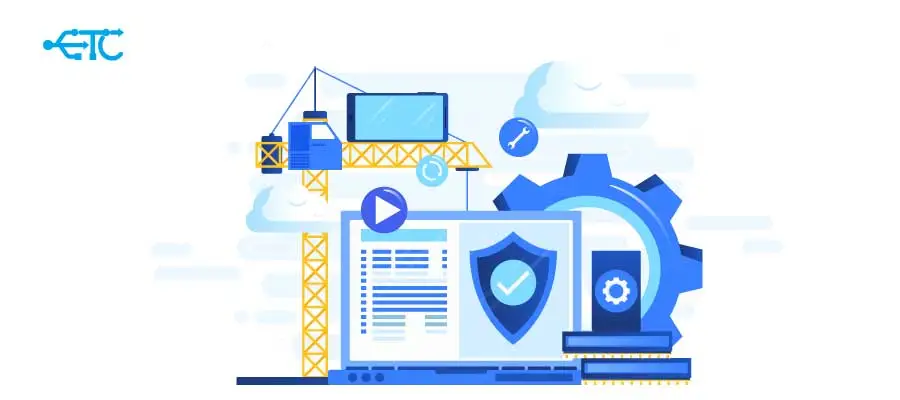Software Maintenance Plan: 9 Steps to Optimal Performance

Software maintenance is a crucial aspect of managing any software system, encompassing various activities aimed at preserving and enhancing its performance over time. In this comprehensive guide, we will delve into the definition of software maintenance, outline the key steps to create an effective maintenance plan, and provide an overview of the types of software maintenance.
What is Software Maintenance?
Software maintenance involves the modification and updating of a software system to ensure its continued relevance, functionality, and security. It includes fixing bugs, adapting to environmental changes, enhancing features, and proactively preventing future issues. Essentially, it’s the ongoing process of managing and optimizing a software application throughout its lifecycle.
9 Steps to Develop An Effective Software Maintenance Plan
Developing a robust software maintenance plan is paramount for sustaining optimal performance and longevity. Follow these key steps:

Step 1: Assess Current Software Landscape
Initiate the process by conducting a thorough assessment of existing software. Identify applications, versions, and dependencies while evaluating performance and noting any recurring issues or vulnerabilities. This audit forms the foundation for a targeted maintenance approach.
Step 2: Define Maintenance Objectives
Clearly outline the goals of your maintenance plan. Whether it’s improving system performance, enhancing security, or ensuring regulatory compliance, understanding objectives tailors the plan to specific needs and allocates resources effectively.
Step 3: Establish a Regular Update Schedule
Ensure regular updates by defining a schedule and communicating it across the organization. This keeps stakeholders informed, enabling them to plan around maintenance activities.
Step 4: Prioritize Critical Updates
Distinguish critical updates addressing security vulnerabilities or crucial performance enhancements. Establish a protocol for swift implementation to minimize potential risks.
Step 5: Implement Version Control
Introduce version control mechanisms to systematically track changes and updates. This facilitates issue identification and allows for easy rollback in case of unexpected problems.
Step 6: Monitor and Analyze System Performance
Regularly monitor software system performance using tools and processes to analyze logs. Proactively address potential issues before escalation, gaining valuable insights for continuous improvement.
Step 7: Develop Contingency Plans
Despite meticulous planning, unforeseen issues can arise. Establish contingency plans, including backup systems, disaster recovery procedures, or a dedicated support team to promptly address unexpected challenges.
Step 8: Document and Communicate Changes
Maintain clear documentation of all changes made during the maintenance process. This serves as a reference for future updates and fosters seamless collaboration among team members. Communicate changes to relevant stakeholders for transparency.
Step 9: Training and Skill Development
Invest in training programs to ensure your team possesses the necessary skills for effective plan execution. Keeping the team updated on the latest technologies enhances their ability to address evolving challenges.
Types of Software Maintenance
Software maintenance involves a spectrum of activities aimed at preserving, enhancing, and optimizing a software system throughout its lifecycle. Understanding the various types of maintenance is crucial for developing a comprehensive strategy.
Here’s an overview of the main types:
1. Corrective Maintenance
Corrective maintenance is reactive in nature, focusing on addressing bugs, errors, and issues that emerge during the software’s operation. The primary goal is to restore the software to its intended functionality, ensuring a smooth user experience. This type of maintenance is essential for resolving unexpected challenges promptly.
2. Adaptive Maintenance
As the technology landscape evolves, software must adapt to new environments, hardware, or operating systems. Adaptive maintenance involves modifications to the software to ensure compatibility with the changing technological ecosystem. This proactive approach helps the software stay relevant and functional in dynamic IT environments.
3. Perfective Maintenance
Perfective maintenance is all about improvement. It involves enhancing existing features, optimizing performance, and adding new functionalities to meet evolving user needs. This type of maintenance contributes to the software’s longevity by ensuring it remains competitive, efficient, and aligned with user expectations.
4. Preventive Maintenance
Preventive maintenance is a proactive strategy aimed at identifying and addressing potential issues before they escalate into critical problems. By implementing measures to mitigate risks, such as updating software components or conducting regular system checks, organizations can minimize the likelihood of disruptions and unexpected failures.
Ready to optimize your software for long-term success ?
Explore our maintenance services to keep your software at its best !
Conclusion:
Understanding software maintenance and following these nine steps will help you navigate the complexities, ensuring a resilient and efficient IT infrastructure. By embracing a proactive approach and integrating various maintenance types, you contribute to the longevity, security, and optimal performance of your software systems.
